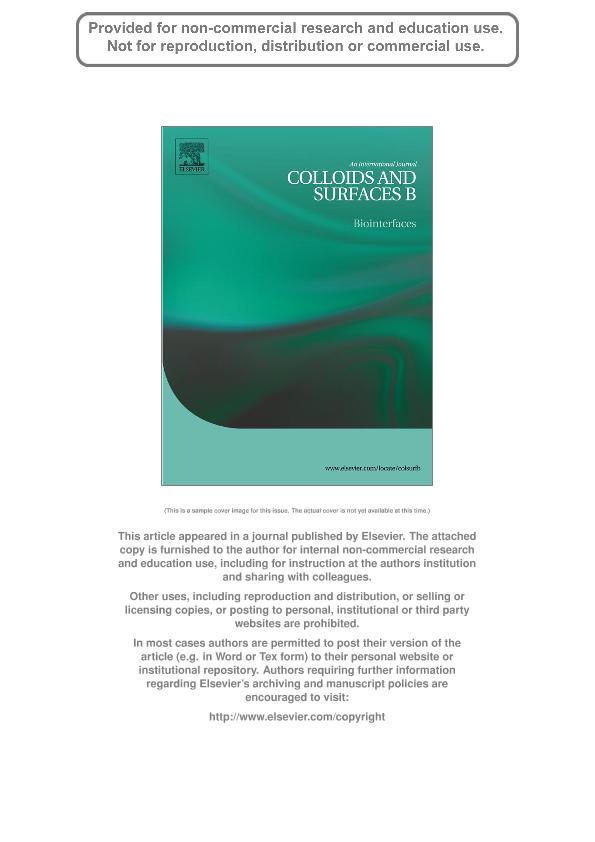Artículo
Amaranth proteins foaming properties: Adsorption kinetics and foam formation—Part 1
Fecha de publicación:
05/2013
Editorial:
Elsevier Science
Revista:
Colloids And Surfaces B: Biointerfaces
ISSN:
0927-7765
Idioma:
Inglés
Tipo de recurso:
Artículo publicado
Clasificación temática:
Resumen
This work has focused on the study of the relationships between the structural changes in proteins of amaranth under different conditions of pH and ionic strength and the ability to form foam, also taking into consideration the kinetics of adsorption of proteins at the interface. Results showed that treatment at pH 2.0 significantly improves the foaming properties of amaranth proteins. The structural studies performed indicate that amaranth proteins at acidic pH are denatured, dissociated and undergo partial hydrolysis due to the existence of an endoprotease. They also present a lower content of -sheet and random coil secondary structures. Diffusion–adsorption studies of proteins at the air:water interface allowed to determine that the acidic pH favors adsorption thereof (higher values of kdiff and ka) and reduces the need for a rearrangement (higher values of r). The interfacial behavior of amaranth proteins is a direct consequence of the structural changes they undergo at acidic pH, changes that also were reflected on the increased foaming capacity (higher vo) thus forming more dense and homogeneous foams. The behavior of the soluble proteins as surfactants was not altered by the presence of protein aggregates and insoluble proteins.
Palabras clave:
Amaranth Proteins
,
Interface Air/Water
,
Foam Formation
Archivos asociados
Licencia
Identificadores
Colecciones
Articulos(CIDCA)
Articulos de CENTRO DE INV EN CRIOTECNOLOGIA DE ALIMENTOS (I)
Articulos de CENTRO DE INV EN CRIOTECNOLOGIA DE ALIMENTOS (I)
Citación
Bolontrade, Agustín Juan; Scilingo, Adriana Alicia; Añon, Maria Cristina; Amaranth proteins foaming properties: Adsorption kinetics and foam formation—Part 1; Elsevier Science; Colloids And Surfaces B: Biointerfaces; 105; 5-2013; 319-327
Compartir
Altmétricas




